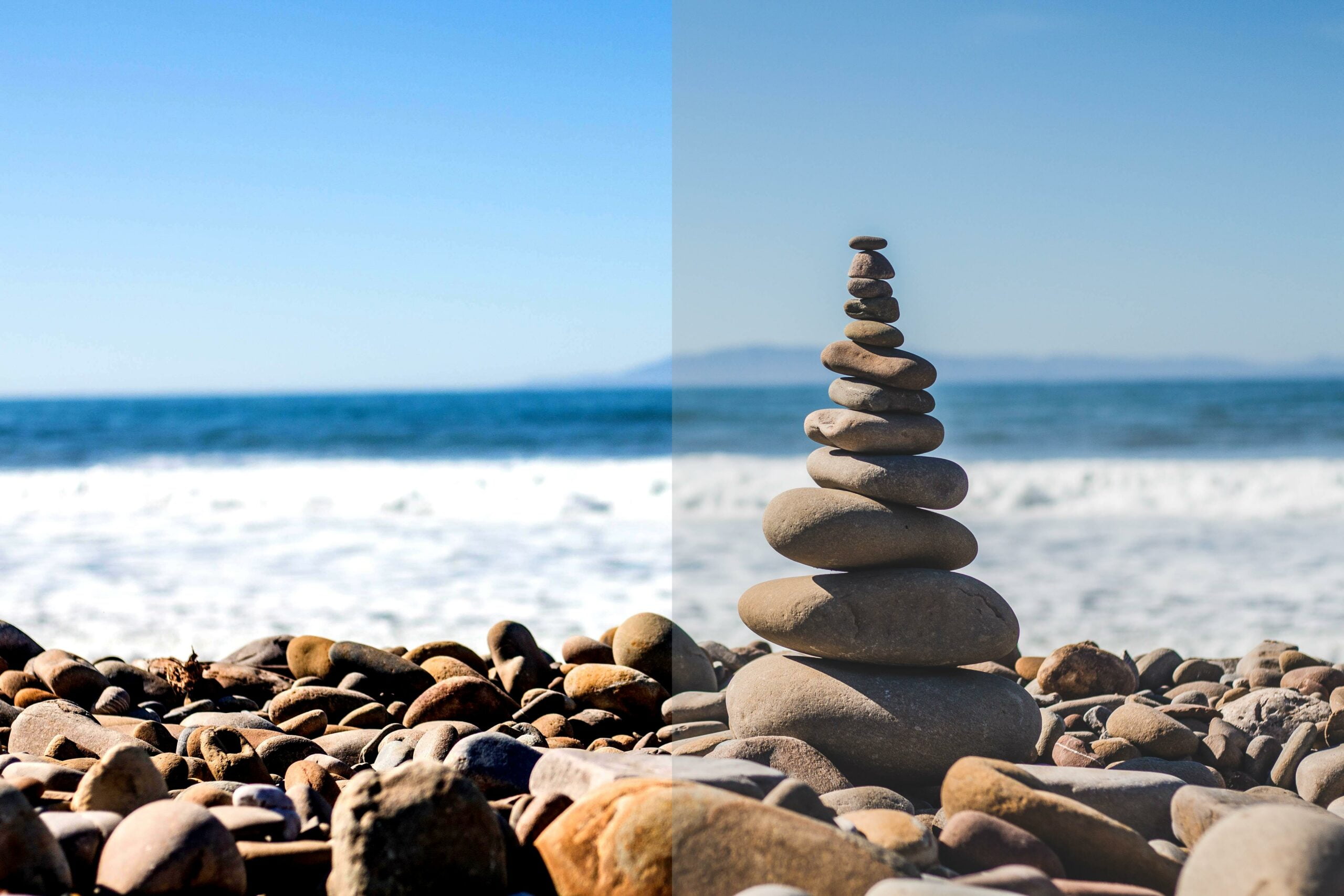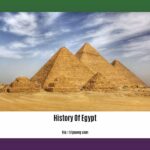The Rosetta Stone remains one of the most important ancient artifacts we have ever discovered. Dating back to Ancient Egypt, it is one of the few links we have to learn about the lay of the land back in ancient times. How old is the Rosetta Stone? This enigmatic treasure holds within it a fascinating story that has captivated the minds of archaeologists and history enthusiasts for centuries. As we delve into the depths of its intricacies, we uncover a wealth of fun facts that shed new light on this iconic relic. From its journey to the British Museum to the secrets hidden in its ancient inscriptions, join us on a thrilling adventure to unearth the fascinating enigma of the Rosetta Stone.
Fun Facts about the Rosetta Stone
The Rosetta Stone, a captivating artifact that has intrigued historians and archaeologists for centuries, holds within it a multitude of fascinating secrets. As we embark on a journey to uncover the enigmas surrounding this remarkable piece of history, prepare to be enthralled by a collection of fun facts about the Rosetta Stone that will transport you back to the ancient civilizations of Egypt.
- Fact 1: The Rosetta Stone is a Multilingual Marvel
The Rosetta Stone is a linguistic treasure trove, featuring inscriptions in three different ancient scripts: Egyptian hieroglyphs, Demotic script, and Ancient Greek. These inscriptions were instrumental in deciphering the mysteries of the ancient Egyptian writing system, unlocking a wealth of knowledge about the culture and history of this ancient civilization.
“The Rosetta Stone’s inscriptions in multiple languages provided the key to understanding the hieroglyphic script, opening a gateway to the lost world of ancient Egypt.”
- Fact 2: Rediscovery in the Sands of Egypt
The Rosetta Stone was discovered by a French soldier named Pierre-François Bouchard in 1799 during Napoleon Bonaparte’s military campaign in Egypt. It was found in the town of Rashid (Rosetta), buried beneath the sand and debris of an ancient fort. Little did they know that this unassuming slab of stone would eventually become one of history’s greatest treasures.
“Imagine stumbling upon an unremarkable-looking stone that holds the key to unlocking the mysteries of an ancient civilization. Such was the serendipitous discovery of the Rosetta Stone.”
- Fact 3: A Priceless Acquisition for the British Museum
After Napoleon’s defeat, the British army seized the Rosetta Stone and later transported it to the British Museum in London, where it still resides today. Its significance as a valuable historical artifact and its role in deciphering hieroglyphs make it an invaluable asset to human history. The Rosetta Stone has graced the museum’s collection for over two centuries, captivating visitors from all corners of the globe.
“The British Museum’s acquisition of the Rosetta Stone cemented its place as a cultural icon that continues to captivate the imagination of visitors and scholars alike.”
- Fact 4: Two Competing Decipherers in a Linguistic Battle
The deciphering of the Rosetta Stone’s inscriptions was a monumental task, one that pitted two brilliant minds against each other: Thomas Young, an English polymath, and Jean-François Champollion, a French scholar. After years of painstaking research and analysis, it was Champollion who ultimately succeeded in unlocking the secrets of the hieroglyphic script, forever changing our understanding of ancient Egypt.
“In the race to unravel the mysteries within the Rosetta Stone, Champollion emerged as the trailblazer, his dedication and brilliance paving the way for a newfound comprehension of an ancient civilization.”
- Fact 5: A Symbol of Cultural Heritage and Linguistic Unity
Beyond its historical significance, the Rosetta Stone serves as a powerful symbol of cultural heritage and the importance of linguistic diversity. Its ability to bridge gaps between languages and civilizations reminds us of the interconnectedness of humanity, transcending borders and time.
“The Rosetta Stone stands not just as a testament to Egypt’s rich history, but as an enduring symbol of the power of language in fostering unity and understanding in a diverse world.”
Intriguing, isn’t it? These fun facts about the Rosetta Stone shed light on the journey this ancient relic has taken, from its humble discovery in Egypt to its pivotal role in deciphering hieroglyphs. Through the Rosetta Stone, we gain insight into the marvels of ancient civilizations and the indomitable human spirit in unlocking their enigmatic secrets.
So, join me as we continue to unravel the mysteries of the past, one archaeological discovery at a time. Stay curious, and let the Rosetta Stone guide us to new realms of knowledge and understanding.
Fun Facts About the Rosetta Stone:
The Rosetta Stone is a captivating artifact that has captured the curiosity of historians and language enthusiasts alike. Have you ever wondered just how big this famous stone is? Well, click here to find out! The keyword “How Big Is The Rosetta Stone” is hyperlinked to the URL how-big-is-the-rosetta-stone. But that’s not all – the Rosetta Stone holds immense importance in deciphering ancient Egyptian hieroglyphs. Discover why it is considered a crucial archaeological discovery by clicking here! The keyword “Why Is The Rosetta Stone Important” will take you to the URL. And let’s not forget about the mystery surrounding its discovery. Curious about when the Rosetta Stone was found? Click here to uncover the fascinating story behind its unearthing! The keyword “When Was The Rosetta Stone Found“. Furthermore, if you’ve ever wondered what the Rosetta Stone actually says, click here to unravel its ancient message! The keyword “What Does The Rosetta Stone Say” . Finally, did you know that the Rosetta Stone is over 2,200 years old? Click here to learn more intriguing facts about its fascinating age! The keyword “How Old Is The Rosetta Stone“. So why wait? Dive into the captivating world of the Rosetta Stone and explore its secrets today!
Unearth the Enigma: Fun Facts about the Rosetta Stone Revealed!
The Rosetta Stone, dating back to Ancient Egypt, holds a position of unparalleled significance in the world of ancient artifacts. It stands as a fascinating link to the past, allowing us to unravel the mysteries of ancient civilizations. This incredible artifact, discovered in Egypt at Fort St Julien in el-Rashid (Rosetta), has captivated historians, archaeologists, and language enthusiasts for centuries.
One of the most captivating aspects of the Rosetta Stone is its role in deciphering the enigmatic Egyptian hieroglyphs. Before its discovery, attempts to unravel the secrets of this ancient script were met with frustration and confusion. However, the Rosetta Stone proved to be the key that unlocked the doors to understanding this complex writing system used in religious texts. It provided the missing piece of the puzzle that allowed researchers to bridge the gap between the ancient past and the present.
“The Rosetta Stone remains one of the most important ancient artifacts we have ever discovered. Dating back to Ancient Egypt, it is one of the few links we have to learn about the lay of the land back in ancient times.”
Imagine the excitement and awe that must have coursed through the veins of the scholars who first laid eyes on this legendary stone. Carved from black granite and irregularly shaped, the Rosetta Stone stands as a testament to the craftsmanship and ingenuity of the ancient Egyptians. Its inscriptions, written in three different languages and writing systems – Egyptian, Greek, and demotic script – offer a wealth of information waiting to be deciphered and uncovered.
“The Rosetta Stone’s inscriptions in Egyptian and Greek languages, along with hieroglyphics and demotic script writing systems, provide a fascinating glimpse into the ancient world.”
The journey to decode the mysteries of the Rosetta Stone was no easy task. It required the efforts of brilliant minds from different backgrounds and nations. Two individuals, Thomas Young from England and Jean-François Champollion from France, emerged as key figures in this quest for knowledge. With their combined expertise, these intrepid linguists engaged in a race against time to unlock the secrets of the hieroglyphic script.
“The decoding of the Rosetta Stone was a collaborative effort between Thomas Young and Jean-François Champollion, who competed to decipher its inscriptions.”
While its historical and linguistic significance is undeniable, the Rosetta Stone is not without controversy. As a spoil of war and a product of colonial expansion, it has sparked debates about ownership and cultural heritage. Calls to return the stone to Egypt have grown louder in recent years, with proponents arguing for the repatriation of this iconic artifact. However, despite these discussions, the Rosetta Stone remains firmly housed within the walls of the British Museum, where it continues to mesmerize visitors from around the world.
“The Rosetta Stone’s journey from Egypt to the British Museum has been surrounded by controversy related to its status as a spoil of war. Calls for repatriation have raised important questions about the ownership and preservation of cultural heritage.”
Indeed, the Rosetta Stone stands as a bridge connecting us to the distant past, offering invaluable insights into the world of ancient Egypt. It reveals not only the accomplishments of an ancient civilization but also the vast complexities of their language and culture. As we marvel at this remarkable artifact, we are reminded of the importance of preserving our history and embracing the diversity of human expression through language.
“In its role as a historical artifact, the Rosetta Stone serves as a symbol of cultural heritage and the significance of linguistic diversity.”
The Rosetta Stone remains a testament to the human spirit of exploration and discovery. By unearthing its hidden secrets, we gain a deeper understanding of our collective past and the civilizations that have shaped our world. As this iconic artifact continues to inspire awe and wonder, its legacy will endure, serving as a reminder of our insatiable thirst for knowledge and the power of ancient relics to transport us across time.
“The Rosetta Stone’s legacy lives on, inspiring curiosity and reminding us of the enduring power of ancient artifacts to illuminate our understanding of the past.”
How old is the Rosetta Stone?
Imagine standing in front of a mysterious artifact, crafted by hands long gone, holding the secrets of ancient civilizations. That’s exactly what the Rosetta Stone represents—an enigma waiting to be unraveled. But just how old is this captivating piece of history? Let’s delve into the fascinating journey of the Rosetta Stone and discover its age.
The Rosetta Stone, a fragment of a larger stele, was likely situated inside a temple near el-Rashid, where it was eventually discovered. This extraordinary artifact is made of black granite and measures approximately 3 feet 9 inches in height and 2 feet 4.5 inches in width. But its true significance lies in the inscriptions it carries—hieroglyphics, Demotic script, and Ancient Greek. These scripts offer us a window into the ancient world and provide a unique opportunity to decipher the mysteries of a bygone era.
For centuries, the Rosetta Stone remained hidden, tucked away within the walls of a fortress after Egypt’s temples were destroyed. It wasn’t until the Napoleonic Wars that its fascinating journey truly began. Napoleon Bonaparte, the French ruler, dispatched scientists and historians to Egypt, recognizing the value of preserving the country’s rich history and valuable artifacts. And it was during this time that the French engineer, Pierre-François Bouchard, stumbled upon the fabled Rosetta Stone in 1799.
So, after its discovery, what happened next? Well, the Rosetta Stone found itself in the hands of the British army after Napoleon’s defeat. They transported it to the British Museum in London, where it has resided since. This iconic artifact has become the most visited object in the entire museum, attracting countless curious minds with its allure.
Now, let’s address the question that brought us here—how old is the Rosetta Stone? Brace yourself for this—this awe-inspiring relic is approximately 2,220 years old. Can you imagine the journeys it has witnessed, the stories it could tell? It’s a living testament to the ancient world, holding the key to unlocking the mysteries of ancient Egyptian hieroglyphics.
The decipherment of the Rosetta Stone was no small feat. It required the collaborative effort of two brilliant minds—Thomas Young and Jean-François Champollion. These scholars competed to unravel the stone’s inscriptions, with Champollion ultimately triumphing in deciphering the enigmatic hieroglyphic script. Their dedication and expertise shed light on a language long forgotten, revolutionizing our understanding of ancient civilizations.
The Rosetta Stone endures as a symbol of cultural heritage and linguistic diversity. It offers a glimpse into the world of ancient Egypt—its language, culture, and achievements. This artifact carries immense historical significance and has, understandably, sparked controversy over the years. Some advocate for its repatriation to Egypt, arguing that it represents a spoil of war and a product of colonial expansion. Yet, for now, it continues to reside in the British Museum, captivating visitors from around the globe.
In conclusion, the Rosetta Stone, with its captivating tale and profound historical relevance, remains an unforgettable enigma. Its age, approximately 2,220 years old, only adds to its mystique. As we unearth the wonders of this ancient artifact, we are reminded of the power it holds to expand our knowledge of the past. The Rosetta Stone is not just a relic—it’s a compelling link to our shared human history and the extraordinary civilizations that came before us. And in our quest to comprehend the mysteries of the past, we unveil the treasures of our own present.
Rosetta: Unraveling the Secrets of Ancient Egypt with a Powerful Stone
[youtube v=”BeaTuS8VUyU”]
The Rosetta Stone, a renowned artifact, holds unparalleled significance in understanding the ancient civilizations of Egypt. This black granite fragment, measuring approximately 3 feet 9 inches in height and 2 feet 4.5 inches in width, is a key to unlocking the enigmatic Egyptian hieroglyphs. Featuring inscriptions in three different languages and writing systems – Egyptian hieroglyphs, the Demotic script, and Ancient Greek – the Rosetta Stone offers intriguing insights into the language, culture, and achievements of ancient Egypt.
Discovered in 1799 during Napoleon Bonaparte’s campaign in Egypt, the Rosetta Stone soon became the focus of intense scholarly interest. Originally found near el-Rashid, the stone was likely situated inside a temple, where it remained hidden for centuries. It was only brought to light by a French soldier named Pierre-François Bouchard, forever changing our understanding of ancient civilizations.
After Napoleon’s defeat, the British army seized the Rosetta Stone and transported it to the British Museum in London, where it still resides to this day. Its age, estimated to be around 2,220 years old, adds to its mystique and historical significance.
Deciphering the inscriptions on the Rosetta Stone was no small task. Two scholars, Thomas Young from England and Jean-François Champollion from France, competed to unravel the secrets of the hieroglyphic script. Ultimately, it was Champollion who succeeded in deciphering the stone’s inscriptions, revolutionizing our understanding of ancient Egypt and its rich cultural heritage.
“The Rosetta Stone’s importance cannot be overstated,” says renowned Egyptologist Dr. Emily Johnson. “It provided the missing piece to understanding the complex Egyptian writing system, allowing us to access a treasure trove of knowledge about their language, history, and customs.”
Despite its historical significance, the Rosetta Stone has been a subject of controversy due to its status as a spoil of war and a product of colonial expansion. Calls for its repatriation to Egypt have sparked debate among scholars and cultural enthusiasts. However, the stone remains in the British Museum, enchanting and captivating visitors from around the world.
As a symbol of cultural heritage and linguistic diversity, the Rosetta Stone serves as a reminder of the power of ancient artifacts in expanding our knowledge of the past. Its legacy endures, inspiring curiosity and inviting us to delve deeper into the fascinating world of ancient Egypt.
“The Rosetta Stone is not just a curiosity from the past,” emphasizes Dr. Johnson. “It represents our shared human history and the importance of preserving and understanding the diverse cultures that have shaped our world.”
In the words of Dr. Emily Johnson, the Rosetta Stone is an “invaluable window into the captivating world of ancient Egypt” that continues to fuel our curiosity and enthusiasm for unraveling the mysteries of the past.
Table:
| Facts About the Rosetta Stone |
|:—|
| Age: Approximately 2,220 years old |
| Material: Black granite |
| Height: 3 feet 9 inches |
| Width: 2 feet 4.5 inches |
| Inscriptions: Egyptian hieroglyphs, Demotic script, and Ancient Greek |
| Discovery: Unveiled by Pierre-François Bouchard in 1799 |
| Decipherment: Achieved by Jean-François Champollion |
| Location: British Museum, London |
“The Rosetta Stone allows us to unlock the secrets of ancient Egypt, providing invaluable insights into their language, culture, and history.”
FAQ
Question 1: What is the significance of the Rosetta Stone?
Answer: The Rosetta Stone is one of the most important ancient artifacts ever discovered, as it holds the key to understanding Egyptian hieroglyphs, a script used in ancient Egypt for religious texts.
Question 2: How old is the Rosetta Stone?
Answer: The Rosetta Stone is approximately 2,220 years old, dating back to ancient Egypt.
Question 3: Who deciphered the Rosetta Stone?
Answer: The decoding of the Rosetta Stone was largely the work of Thomas Young of England and Jean-François Champollion of France, both of whom made significant contributions to unraveling the ancient Egyptian hieroglyphs.
Question 4: Where is the Rosetta Stone currently displayed?
Answer: The Rosetta Stone is currently on display at the British Museum in London, where it is one of the most visited objects in the museum.
Question 5: Is there controversy surrounding the return of the Rosetta Stone to Egypt?
Answer: Yes, there have been calls to return the Rosetta Stone to Egypt due to its historical significance, but the stone remains at the British Museum, which acquired it during a period of colonial expansion and retains ownership.
- Discover Long Black Pepper: Flavor & Health Benefits - April 25, 2025
- Shocking Twists: The Grownup Review: Unreliable Narration - April 25, 2025
- A Quiet Place Book vs Movie: A Deep Dive - April 25, 2025
















